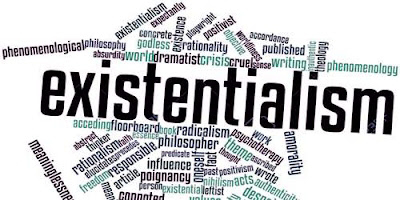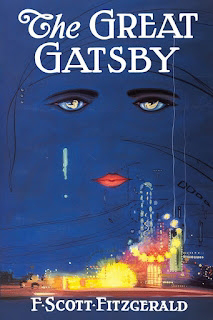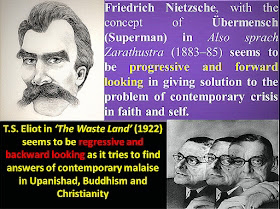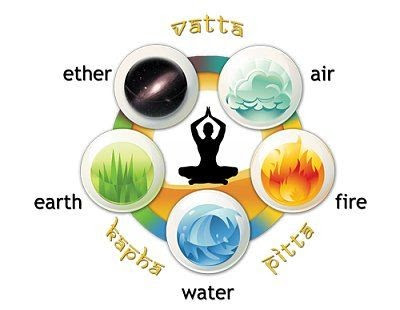Existentialism
This blog is part of Flipped learning-bridge course on Existentialism.
About Flipped Learning :
Flipped learning is an educational approach where traditional classroom activities such as lecture and instruction are moved outside of the classroom, typically through video lectures or other pre-recorded materials. Students then engage with these materials at home, often at their own pace. Classroom time is then used for activities that were traditionally done as homework, such as exercises, projects, or discussions, allowing for more interactive and engaging learning experiences under the guidance of the teacher.
Existentialism:
Thoughts which I like the most:
1st Video:
The first video talks about how being yourself, following your passions, and having the freedom to choose are all really important. They're like the corners of a triangle that help us understand what it means to exist and be alive.
Video-2
The myth of Sysyphus:
I like these thoughts...
The video talks about how life can seem meaningless, according to Albert Camus.
"Suicide", is the only philosophical problem. Existentialism argues that life is meaningless so the quest of meaning in life is the most urgent of question.
It uses the movie 'Stay' to show how some people might think suicide is the best choice in this kind of confusing life.
Video-3
The Notion of Philosophical suicide.
I am impressed by these thoughts from video that how it's connect suicide with philosophy and discuss "Philosophical Suicide".
"Absurd not in the man and not in the world but it takes place when both comes together."
Like suicide God changes with the man.
The video also discussed philosophical suicide, which happens when people feel hopeless, keep rejecting things, and are constantly unhappy.
They use this method to try to escape from the confusion and meaninglessness of life.
Video-4
In this Video I like the idea of Nietzsche ...
Nietzsche considered Dadists creators more than lawbreakers.
“Whom do they hate most? Him who breaks up their tables of values, the breaker, the lawbreaker. He, however, is the creator.”
-Nietzsche
Nietzsche's quote says that people often hate those who challenge their beliefs and rules the most. But interestingly, these challengers are the ones who create new ways of thinking and doing things.
Video-5
I like the following thoughts from fifth video:
"Become who you are" -Nietzsche
Nietzsche's statement "Become who you are" encourages individuals to embrace their true selves and fulfill their potential.
This question is also eye catching :
Is Existentialism a gloomy philosophy?
Life can be full of anxiety, despair, and absurdity, according to Existentialism, but the philosophy emphasizes our freedom to choose our own path.
People can choose their way of life, but sometimes, when things don't go well, they try to escape, which isn't fair.
Existentialism is different from Nihilism. After World War II, people's lives were tough, and everyone was searching for the meaning of life.
Video-6
I like following ideas From fifth video...
From this video we can find that Existentialism and Nihilism have significant differences.
Nihilism is the loss of individuality. So, Existentialism and Nihilism is NOT one or NOT the same.
Existentialism emphasizes subjectivity, focusing on individuality, the concept of nothingness, and the absurdity of life.
On the other hand, Nihilism leans towards objectivity, asserting that everything in life is an illusion.
"All suicides have the responsibility of fighting against the temptation of suicide."
-Hermann Hesse (Der Steppenwolf)
Video-7 .
In this video I like this thoughts the most...
Existentialism ask question of existence that • Why I am here?
• What is life?
• How should I live my life ?
All these questions lead to a feeling of absurdity and reject big, all-encompassing systems.
"Nihilism - There is no meaning or purpose to life."
Divine perspective and human perspective.
Human were not design by any supernatural power, existentialism see the life from religiously, scientifically and philosophically and raise question about human existence.
Video-8
I found it impressive how they discussed existentialism with children, starting at a young age, even though we typically discuss it at the Master's level in India. The message they conveyed through these talk sessions was delivered in simple and clear language, making it easy to understand.
Existentialism and Nietzsche:
Nietzsche's Existentialism talked about that human being is everything, there is no need any supernatural power to govern life.
Like God is dead so human being can make their own rules and be like superman or ubermensch.
Video-9:
Existentialism is a way of life and understand life deeply. Existentialism says about what I am. Eric Dodson said that it is honest and shows reality of life and accept your fault and your abilities.
I'm amazed by Eric Dodson's video on Existentialism, where he connects these philosophical ideas to everyday life. He emphasizes creativity, honesty, and freedom of choice, acknowledging both the bright and dark aspects of existence. Dodson sees Existentialism as a way to be true to oneself and make our own choices for a meaningful life.
Video-10
While many people view "absurdity" as something silly or comedic, for those who follow absurdism, it carries a different meaning altogether.
I like the idea in this video is that only we can give reason to our choice or we can say that there is no reason for choice is just a choice. There is no meaning of life but meaning is given by us to our life.
"The search for answer in an answerless world"
Question.2 :
2. Which video do you like the most? Why? (Give at least one reason in your blog post.).
Answer:
The 8th video left a strong impression on me because it showcased conversations about existentialism with children. Typically, existentialism is a topic reserved for advanced academic levels like Master's studies. However, what struck me was the realization that existential concepts aren't confined to certain age groups; they can be understood and discussed by children as well.
This observation underscores the importance of fostering progressive thinking without imposing age restrictions. By engaging children in discussions about complex philosophical ideas like existentialism, we can cultivate critical thinking skills and broaden their perspectives from a young age. This approach highlights the potential for a more inclusive and open-minded society.
Moreover, integrating such discussions into our education systems can play a significant role in shaping a brighter and more skillful future. By encouraging dialogue about existentialism and other thought-provoking topics, we empower young individuals to explore and question the world around them.
Ultimately, the responsibility lies with us to take proactive steps towards promoting this kind of progressiveness. By embracing inclusivity and encouraging open-mindedness across all age groups, we can collectively contribute to a more enlightened and forward-thinking society.
Question.3:
3. How would you describe the 'learning outcome' of this activity? (Do you think that your understanding of Existentialism has increased or is there clarity about this philosophy in your mind or do you feel confident about speaking/writing on extempore on 'Existentialism' after this activity?) (Write your views in your blog- post.)
Answer:
Learning Outcome:
Engaging in learning about Existentialism has really helped me understand it better. I've been watching videos and checking out other resources, and it's made things a lot clearer for me. Visual aids especially have been super helpful in making complex ideas easier to understand. Now, I can picture key figures of Existentialism in my mind, which is cool. Also, learning about related stuff like Nihilism, Essentialism, and Dadaism has given me more insights and helped me see how they connect to Existentialism.
Question 4:
Most Important Task: Ask Questions: Type your questions in the Google Classroom as 'Class Comment'. You are supposed to ask at least 5 questions from all these videos and reading resources.
Questions :
1.) Existentialism encourages making our own choices and doing what we desire. If we adopt this belief in our lives, can we truly envision or embrace a world where personal choice reigns supreme? To what extent can we integrate this belief into our daily existence and decision-making processes? (1st Video)
2.) When we understand the concept Existentialism, we may come to know certain things about our existence to which we are not aware of and as a result of it the quest for existence many a time leads us towards Nihilism. So, how can we distinguish Existentialism and Nihilism at that moment?
3.) Can Dadaism be understood through the lens of Essentialism, given its unconventional approach to art? (4th Video)
4.) In what ways does the idea of hope intersect with the themes of absurdity and despair in Existentialist thought? (2nd video/ Time stamp: 2.30 min.)
5.) How does Sartre's idea of being "condemned to be free" challenge traditional notions of freedom and choice? (10th Video/ Time stamp : 06:05)















